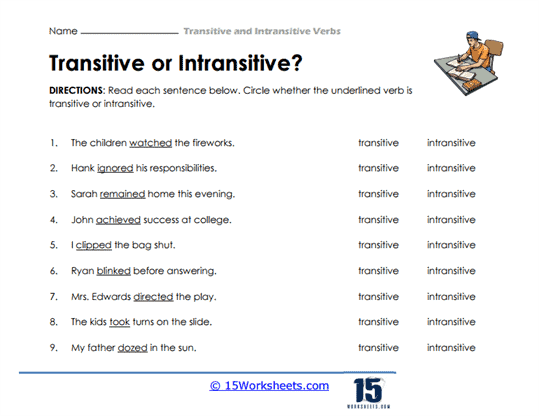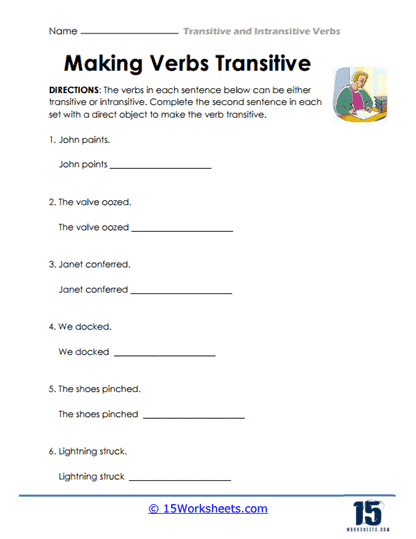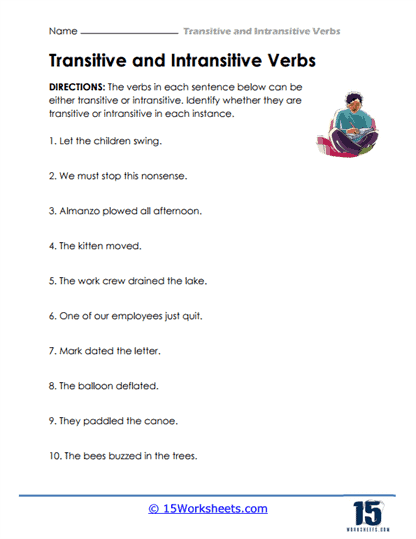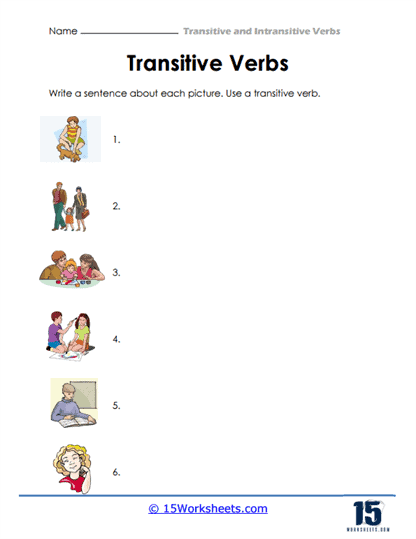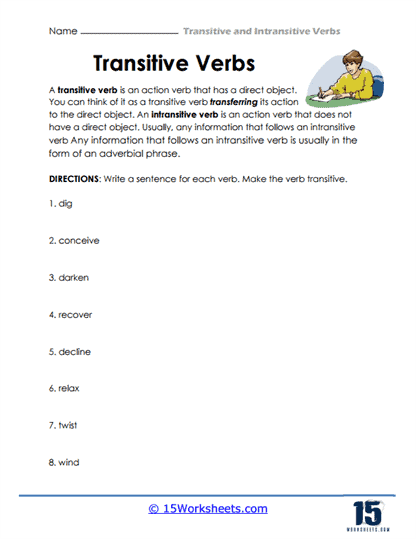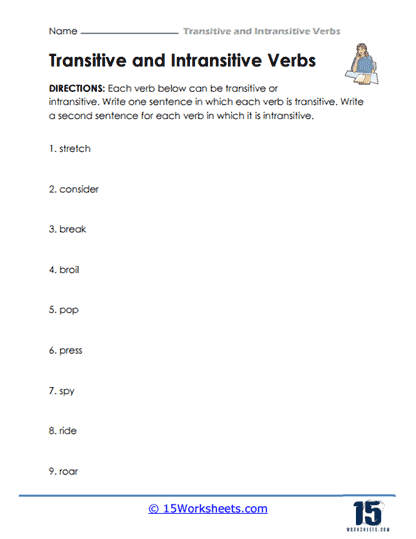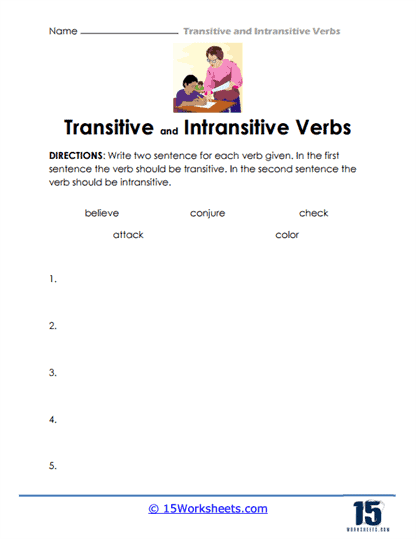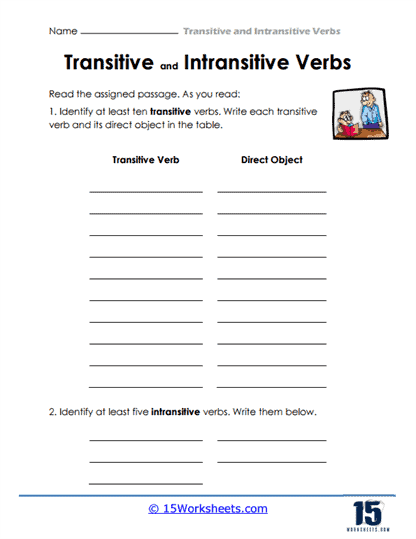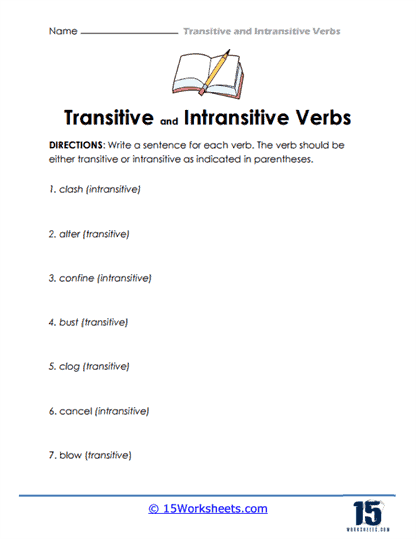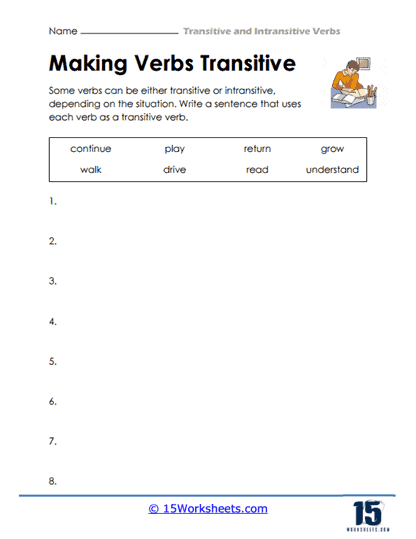Transitive and Intransitive Verbs Worksheets
All About These 15 Worksheets
This collection of Transitive and Intransitive Verbs worksheets can help students to differentiate between these two types of verbs and understand their proper usage. Transitive verbs require an object to receive the action of the verb, while intransitive verbs do not require an object.
These worksheets include a range of exercises and prompts such as fill-in-the-blank exercises, identification questions, rewriting activities, and short writing prompts. Through these worksheets, students will:
- Identify transitive verbs vs. intransitive verbs in sentences, along with their direct object;
- Transform sentences to change their transitive verbs to intransitive verbs, and vice versa;
- And write their own sentences using transitive and intransitive verbs.
By providing students with a variety of exercises and prompts, these worksheets can help students to understand the difference between transitive and intransitive verbs, and enhance their writing and communication skills.
Transitive vs. Intransitive Verbs
Transitive verbs and intransitive verbs are two different types of verbs in English.
Transitive verbs are verbs that require a direct object to complete their meaning. The direct object is the noun or pronoun that receives the action of the verb. Here are some examples of transitive verbs and their direct objects:
- She ate the sandwich. (The direct object is “sandwich”.)
- He threw the ball. (The direct object is “ball”.)
- We watched a movie. (The direct object is “movie”.)
Intransitive verbs, on the other hand, do not require a direct object to complete their meaning. They describe an action or state without acting on anything or anyone. Here are some examples of intransitive verbs:
- She slept soundly.
- He ran quickly.
- They laughed at the joke.
To identify the direct object in a sentence, ask the question “What?” or “Whom?” after the verb. The answer to this question is the direct object. For example:
- She ate the sandwich. (What did she eat? – The sandwich.)
- He threw the ball. (What did he throw? – The ball.)
- We watched a movie. (What did we watch? – A movie.)
It’s important to note that some verbs can be used as both transitive and intransitive, depending on the context of the sentence. For example, “run” can be used as a transitive verb (“She ran the marathon.”) or as an intransitive verb (“She ran to the store.”).
Understanding the difference between transitive and intransitive verbs can help students to use them correctly in their writing and communication.






